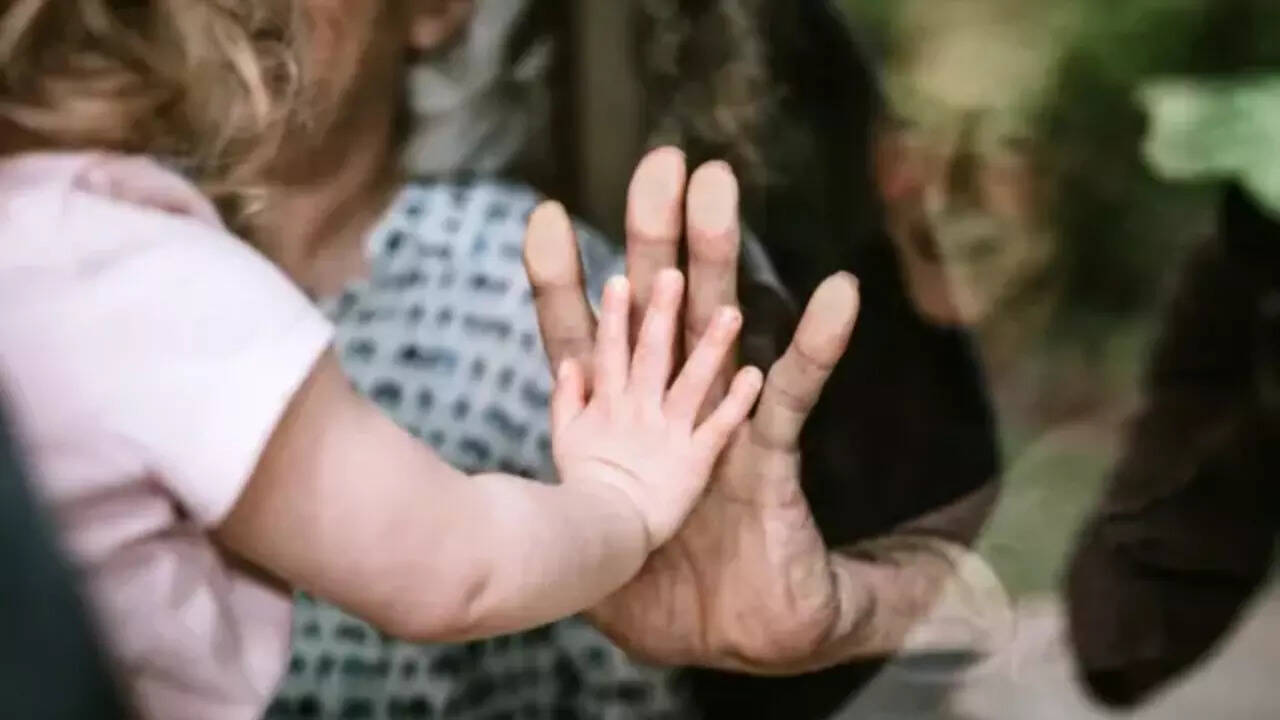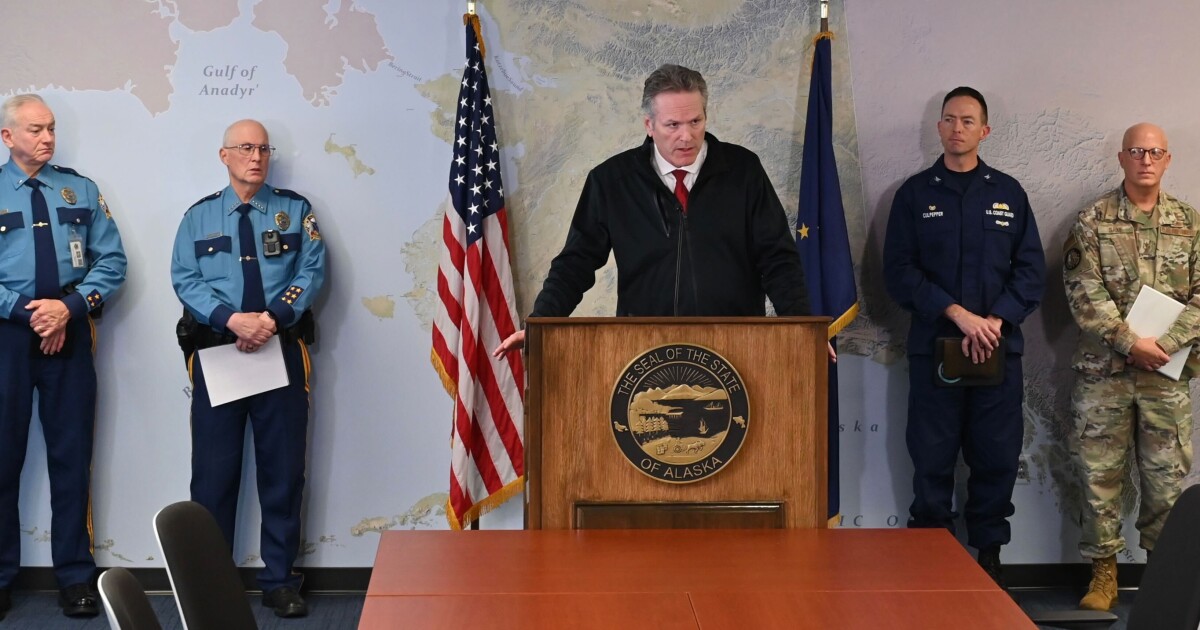The U.S. Coast Guard commander for Western Alaska compared the devastation in Southwest Alaska villages over the weekend to the aftermath of Hurricane Katrina.
“Several of these villages have been completely devastated, absolutely flooded, several feet deep,” Capt. Christopher Culpepper said at a news conference Monday. “This took homes off of foundations. This took people into peril, where folks were swimming, floating, trying to find debris to hold onto in the cover of darkness.”
The remnants of Typhoon Halong barreled into remote, coastal communities in the Yukon-Kuskokwim Delta on Sunday, bringing hurricane-force winds and record flood waters. Coast Guard and National Guard crews have rescued at least 51 people so far from two of the hardest-hit communities: Kipnuk and Kwigillingok.
Troopers said Monday that a woman missing from Kwigillingok had been found dead. Two people remain missing from Kwigillingok. Hundreds of survivors are in community shelters.
“It’s been very scary — very, very scary — for folks,” said State Emergency Operations Center head Mark Roberts.
Roberts and other officials at Monday’s news conference said they’re still taking stock of the damage, but said the storm destroyed dozens of homes. Some of them floated off their foundations with families still inside. Several people called the state’s emergency operations center for help.
“The folks that were in houses that were floating and didn’t know where they were was one of the most tragic things our folks in the state EOC have ever faced,” Roberts said.
The storm also cracked Kipnuk’s runway so planes cannot land and snapped a lot of utility poles in half, leading to continued power outages, Bethel state Sen. Lyman Hoffman said.
Massive search and rescue effort continues
Locating every missing person is the state’s top priority, Roberts said.
Maj. Gen. Torrence Saxe, head of the Alaska National Guard, said he has activated every member of the state’s National Guard and Alaska State Defense Force living in Western Alaska, totaling 60 to 80 people. State officials are also calling up more personnel largely from Fairbanks and Anchorage, he said.
“This may end up being the largest off-the-road-system response for the National Guard in about 45 years,” Saxe said.
Dozens of nonprofit organizations, businesses and faith-based groups, including the Salvation Army, Red Cross, Samaritan’s Purse and World Central Kitchen, are also coordinating recovery efforts with the state, Roberts said.
“We’re coming,” Roberts said. “We’re going to have folks there to help you.”
Matt Faubion
/
Alaska Public Media
Gov. Mike Dunleavy has declared a disaster for the region, easing access to additional resources.
“We know you need help. We’re going to continue to get the help to you,” he said. “We’re going to do everything we can to get everything up and running as quickly as possible, and we will continue to help — not just today, tomorrow, but weeks and months on and until we get things back to what used to be at least considered semi-normal.”
RELATED: Remnants of Typhoon Halong bring widespread damage to Western Alaska
Record flooding
The storm surge broke records in the hardest hit communities, said meteorologist David Kramer of the National Weather Service. At Kipnuk, the water reached 6.6 feet above the normal highest tide mark, he said.
“The previous record was 4.7 feet, and that was back in 2000. So almost two feet higher than what we have seen before,” Kramer said.
The surge at Kwigillingok was also several feet higher than the last record high water, Kramer said.
Despite its fierceness, this storm was more focused than Merbok, the big disaster that hit Western Alaska in 2022.
“Merbok was, I’ll say, more extended on the coast,” said Gen. Saxe. “This really did hit certain areas very hard, and we want to get our help there, as I said, very quickly.”
Coast Guard assess environmental impacts
In addition to its search and rescue mission, the Coast Guard is also focused on the potential for a marine disaster. By midday, the only pollution reported was a light sheen in the flood waters, but the area of storm damage includes dozens of bulk fuel tanks and other fuel storage facilities, Culpepper said.
“These facilities are those that which the communities rely upon for home heating oil, subsistence through winter, for travel, for fuel, for vehicles, boats, aircraft, and they’re critical assets,” he said.
Coast Guard teams will conduct assessments and decide where the greatest danger is, he said.
Dunleavy said spilled oil is a low priority for the state right now.
Matt Faubion
/
Alaska Public Media
“We’ve got to take care of people quickly. We have to take care of their needs quickly,” he said. “We have to take care of water, food, sanitation, electricity.”
Oil and gasoline spills can be addressed later, he said.
‘More and more warming that is disrupting lives’
Dunleavy said he didn’t know how much climate change may have contributed to the intensity of the storm. Alaska has seen big storms in past decades, too, he said.
“We certainly had a couple stacked on top of each other last couple of years,” he said. “At least two under under my watch.”
Hoffman, who represents the region and grew up in Bethel, said its climate has changed, forcing the village of Newtok to relocate.
“There has been more and more warming that is disrupting lives in the Y-K Delta from the last 25 years that I can tell,” he said.
This story has been updated to include new information about the death of a woman who was missing from Kwigillingok.
First Appeared on
Source link












